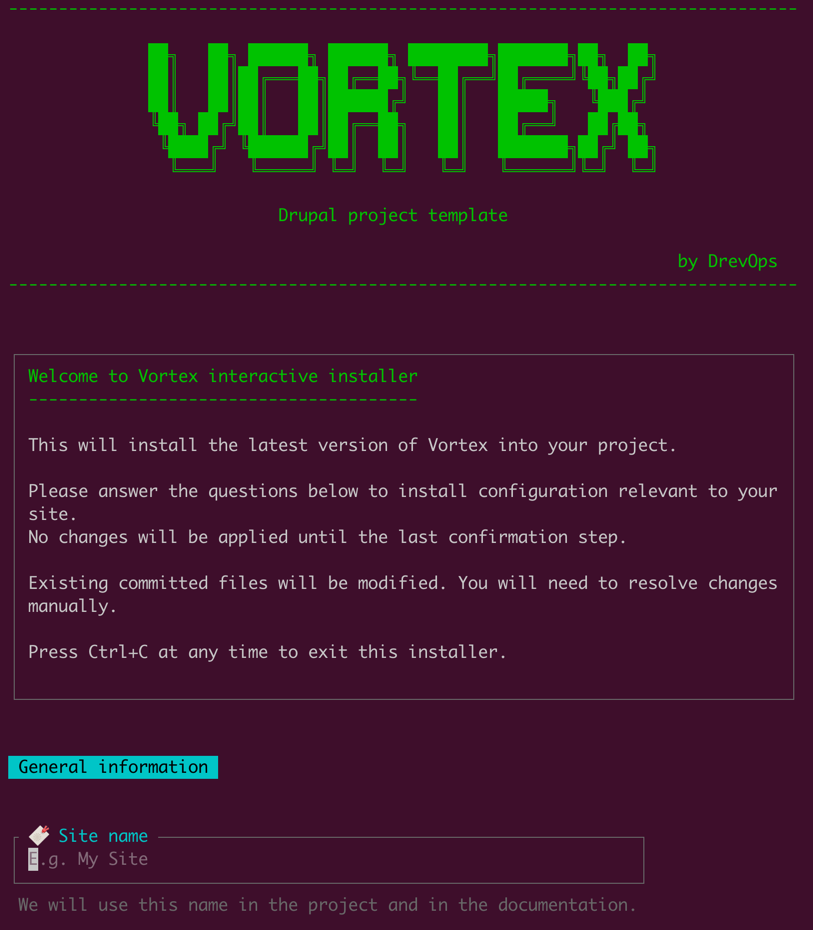Installation
The installation process consists of installing the Vortex template followed by setting up the integrations with the required services.
We automated the first part by providing an in interactive installer. The second part is a manual process that requires you to follow the instructions provided for each service.
Installing Vortex into a new project
-
Create a new directory for your project and navigate to it.
-
Run the following command to install the Vortex template.
Install using interactive promptscurl -SsL https://vortex.drevops.com/install > install.php && php install.php
-
Run the following command to commit the initial project structure.
Commit the initial project structuregit add .
git commit -m "Initial commit" -
Create a new repository on GitHub and push the initial commit to it.
Installing Vortex into an existing project
The installer cannot predict the state of your project, so it is recommended to initialise Vortex into a new directory and then merge the changes from your existing project into the new one.
Make sure to back up your project before proceeding with the following steps.
-
Create a temporary directory and copy all of the files, including hidden files, from your existing project into it.
-
Create a new branch in your existing project.
-
Remove all files except for
.gitdirectory. -
Run the following command to install the Vortex template.
Install using interactive promptscurl -SsL https://vortex.drevops.com/install > install.php && php install.php -
Commit the changes to the new branch.
-
Copy the files from the temporary directory back into the project directory, overriding the files that were installed by Vortex. Git status will show the changes between the Vortex files and your files.
-
Selectively choose which changes to keep and which to discard:
-
Potentially, you may want to remove the module and theme examples provided by Vortex.
-
composer.jsonwould need to be merged manually, preserving all the entries from the Vortex'scomposer.json. -
composer.lockwould need to be removed and fully regenerated by runningcomposer install.
-
-
Commit the changes to the new branch and push to remote.
Setting up integrations
Depending on the services you are using, you will need to set up the integrations with CI, Docker Hub, your hosting and other services.
Please refer to the following guides for more information: